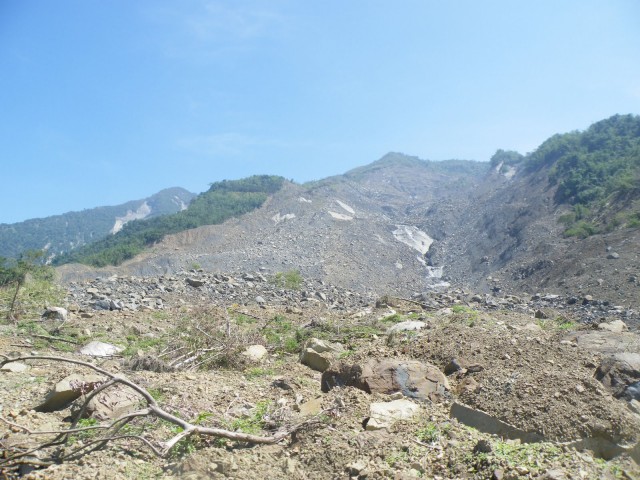13 March 2012
Characterizing landslides with real-time seismic signals
Posted by Dave Petley
![]() Last year I blogged on some fascinating research from Switzerland that had examined the potential for locating large landslides using seismic datasets. The research (Dammeier et al. 2012) showed that not only is it possible to locate the landslides to within a few kilometres, but that it is also possible to extract information about the characteristics of the landslide from the seismic data. Interestingly, this week the journal Landslides has posted online an article (Kao et al. 2012) that examines the use of seismic data to identify and locate landslides in near real-time.
Last year I blogged on some fascinating research from Switzerland that had examined the potential for locating large landslides using seismic datasets. The research (Dammeier et al. 2012) showed that not only is it possible to locate the landslides to within a few kilometres, but that it is also possible to extract information about the characteristics of the landslide from the seismic data. Interestingly, this week the journal Landslides has posted online an article (Kao et al. 2012) that examines the use of seismic data to identify and locate landslides in near real-time.
Interestingly, the landslide-inducing event that they have selected is the extraordinary Typhoon Morakot event in Taiwan in 2009, which induced a number of large landslides. I have featured that event in previous posts, and indeed visited the largest landslide later that year. I have also previously featured a paper that examined the seismic signal of the largest landslide triggered by this typhoon (Feng et al. 2010), the landslide at Shiaolin, which is shown below:
This new paper by Kao et al. (2012) seeks to examine seismic waves associated with landslides in more detail. The most interesting element is that the study has examined a pair of major issues that hinder using seismic data in this way:
- Landslides have a very complex seismic signature that makes rapid identification of these events in seismic data rather complex;
- Locating the position of the landslide is rather difficult given the nature of the seismic signal.
The paper looks at the seismic signal associated with a number of landslide events during the typhoon. The exciting element is that they have found two distinct seismic signatures of landslides (in their own words) “tremor-like waveforms with frequent intermixes of P and S waves and a predominant frequency band of 0.5–5 Hz over a time window of several tens of seconds”. This means that algorithms can be designed to process seismic data in near real-time, which would possibly permit the development of a landslide detection system.
The pot of gold here is of course to use seismic data to detect within a day or so of a large triggering event (such as a typhoon) a previously unrecorded landslide event. That has not yet been achieved, but it may well be that we are not too far from that being possible now.
References
Dammeier, F., Moore, J., Haslinger, F., & Loew, S. (2011). Characterization of alpine rockslides using statistical analysis of seismic signals Journal of Geophysical Research, 116 (F4) DOI: 10.1029/2011JF002037
Feng, Z. (2011). The seismic signatures of the 2009 Shiaolin landslide in Taiwan Natural Hazards and Earth System Science, 11 (5), 1559-1569 DOI: 10.5194/nhess-11-1559-2011
Kao, H., Kan, C., Chen, R., Chang, C., Rosenberger, A., Shin, T., Leu, P., Kuo, K., & Liang, W. (2012). Locating, monitoring, and characterizing typhoon-linduced landslides with real-time seismic signals Landslides DOI: 10.1007/s10346-012-0322-z



 Dave Petley is the Vice-Chancellor of the University of Hull in the United Kingdom. His blog provides commentary and analysis of landslide events occurring worldwide, including the landslides themselves, latest research, and conferences and meetings.
Dave Petley is the Vice-Chancellor of the University of Hull in the United Kingdom. His blog provides commentary and analysis of landslide events occurring worldwide, including the landslides themselves, latest research, and conferences and meetings.
[…] cool: Detecting storm-triggered landslides using seismic data. https://blogs.agu.org/landslideblog/2012/03/13/characterizing-landslides-with-real-time-seismic-signa… (via […]